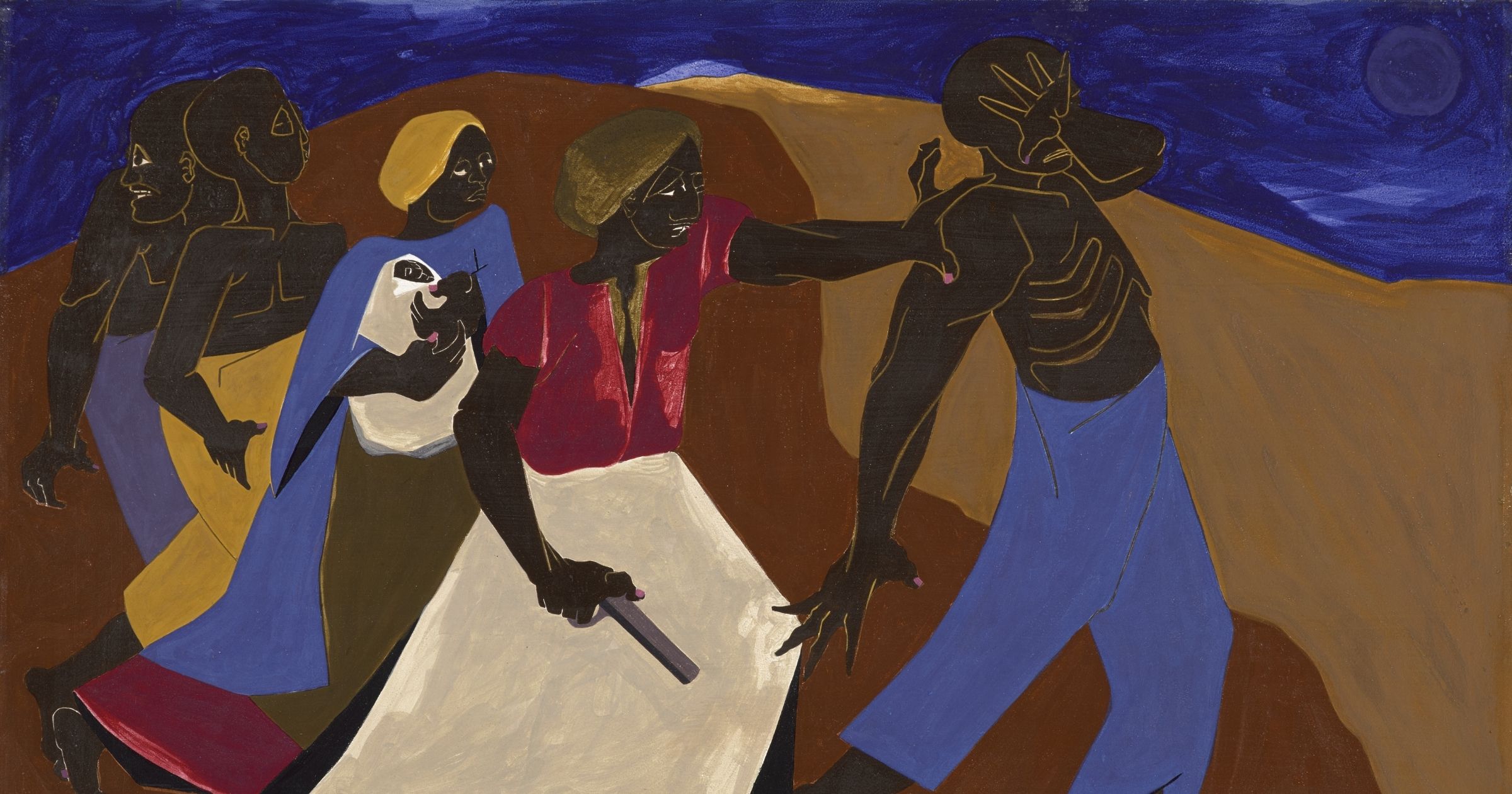
Picturing Freedom: Harriet Tubman and the Combahee River Raid
The Gibbes Museum of Art, a beacon for the arts in the American South since its establishment in 1858, is home to the world premiere of Picturing Freedom: Harriet Tubman and the Combahee River Raid, open now through October 5, 2025.
Inspired by the award-winning book by Pulitzer Prize-winner Dr. Edda L. Fields-Black, the visionary multimedia exhibition details a previously untold chapter in our country's history: On that fateful moonlit night in June of 1863, Harriet Tubman led the largest slave rebellion in U.S. history. Dr. Fields-Black is descended from one of the participants of the freedom raid. The museum exhibition brings to life the heroic raid, when 756 enslaved people liberated themselves in six hours—more than 10 times the number of people Tubman rescued during her 10 years of work on the Underground Railroad. The raid was carried out by one of the earliest all-Black regiments of the Union army.
Guest curated by Dr. Vanessa Thaxton-Ward, the exhibition features a grouping of works honoring Harriet Tubman throughout more than 100 years of American artmaking—a feat of which this size and scope has never been done before. She has selected artworks by major artists (including Jacob Lawrence, Faith Ringgold and William H. Johnson), and by emerging contemporary artists (including Stephen Towns, Terry Plater, and Kevin Pullen).
"The freedom seekers would have been tortured, some put to death, had they been caught," said Angela Mack, President and CEO of the Gibbes Museum of Art. "This exhibition encapsulates what I hoped to convey during my four decades at the Gibbes Museum—telling the powerful stories of the Charleston region through the visual arts, and championing the legacy of artmaking in the South."
The paintings, sculptures and mixed media works are also featured alongside photographs of the region by J Henry Fair, video and audio installations, historic images, and material objects.
"The photographs by J Henry Fair shine a light on how dangerous it was for the enslaved laborers to flee during the raid, through deadly tidal rice swamps with snakes and alligators," Mack said. "While Fair's work usually focuses on the environment, this exhibition marks a new turn for his photography—linking together his images of nature with the ordeals of enslaved people, and the untold history of Harriet Tubman's military service. His striking images of this serpentine landscape immerse viewers in the perils enslaved people faced in this treacherous terrain."
The Gibbes Museum's Picturing Freedom exhibition was three years in the making. In 2022, Dr. Fields-Black and Fair approached Angela Mack about the concept of a museum exhibition.
"As an art museum we immediately recognized the importance of placing a visual history around this historic milestone—to tell this story through art," said Mack. "This is an epic American story with a national legacy and universal impact."
Although this uprising was orchestrated and guided by Tubman, biographies, history textbooks, and films about her life omit this crucial chapter. The Union Army hired her to work deep in slave territory, to gather intelligence for the daring raid up the Combahee River to attack the major plantations of Rice Country. She commanded a ring of spies, scouts, and pilots behind Confederate lines. Tubman and her crew piloted two regiments of Black U.S. Army soldiers, the Second South Carolina Volunteers, and their white commanders up the Combahee River in three gunboats. In a matter of hours, they liberated hundreds of people whose language and culture Tubman could not even understand.
When Tubman and the gunboats arrived and blew their steam whistles, many of those people raced onboard and sailed to freedom.
"It was exciting to see how many artists through the years have created works that portray Harriet Tubman, in so many different mediums," said Dr. Thaxton-Ward, who explored why artists continue to turn to images of Harriet Tubman and the Combahee River region to express ideas of freedom and legacy. "I want this exhibition to show that Tubman was a whole person—she was more than the conductor of the Underground Railroad. She was a wife, she was a mother, she was a daughter. Through this exhibition, we see how Tubman was also a human being who had feelings, who had a family.
"We also wanted to show how hard life was for enslaved laborers in the rice fields, especially the children. Many of these families were brought to the region because of their prior knowledge of the rice culture in West Africa."
Thanks to the extensive research and book by Dr. Fields-Black, these enslaved laborers are finally given names and stories, to permanently inscribe them into the historical record. After the war, many returned to the same rice plantations from which they had escaped, purchased land, and started families. They created the distinctly American Gullah Geechee dialect, culture, and identity, celebrated today as one of Harriet Tubman's most significant legacies.
Groups visiting the exhibition can see a video re-enactment of the night of the freedom raid, in addition to the Legacy section of the museum which includes audio installations featuring some of the descendants that Dr. Fields-Black and Fair interviewed during their research. Material objects include the large-scale West African mortar and pestle that was gifted to Dr. Fields-Black during her research trip to Africa.
One of the artworks visitors will see in the exhibition is titled Can you break a Harriet by Kevin Pullen, an artist based in St. Simons, Georgia. This work reflects the legacy aspect of the exhibition, acknowledging that for over a decade people have been working to have Tubman honored on the U.S. $20 bill. On Veterans Day, November 11, 2024, Tubman was posthumously commissioned as a Brigadier General by the Maryland National Guard. She was the first woman in the U.S. to lead an armed military operation during a war, yet she was never given official status by the military, and fought for decades for her military pension. Now, more than a century after her death and 160 years after her military service, Harriet Tubman was named a general.
Learn more about the exhibition by visiting The Gibbes Museum.
Courtesy of Groups Today.
Main image: Forward, by Jacob Lawrence (1967), tempera on masonite panel. North Carolina Museum of Art, purchased with funds from the State of North Carolina. ©2025 The Jacob and Gwendolyn Knight Lawrence Foundation, Seattle / Artists Rights Society, NY.
Want articles like this one sent directly to your inbox? Subscribe to our weekly eNews here.



